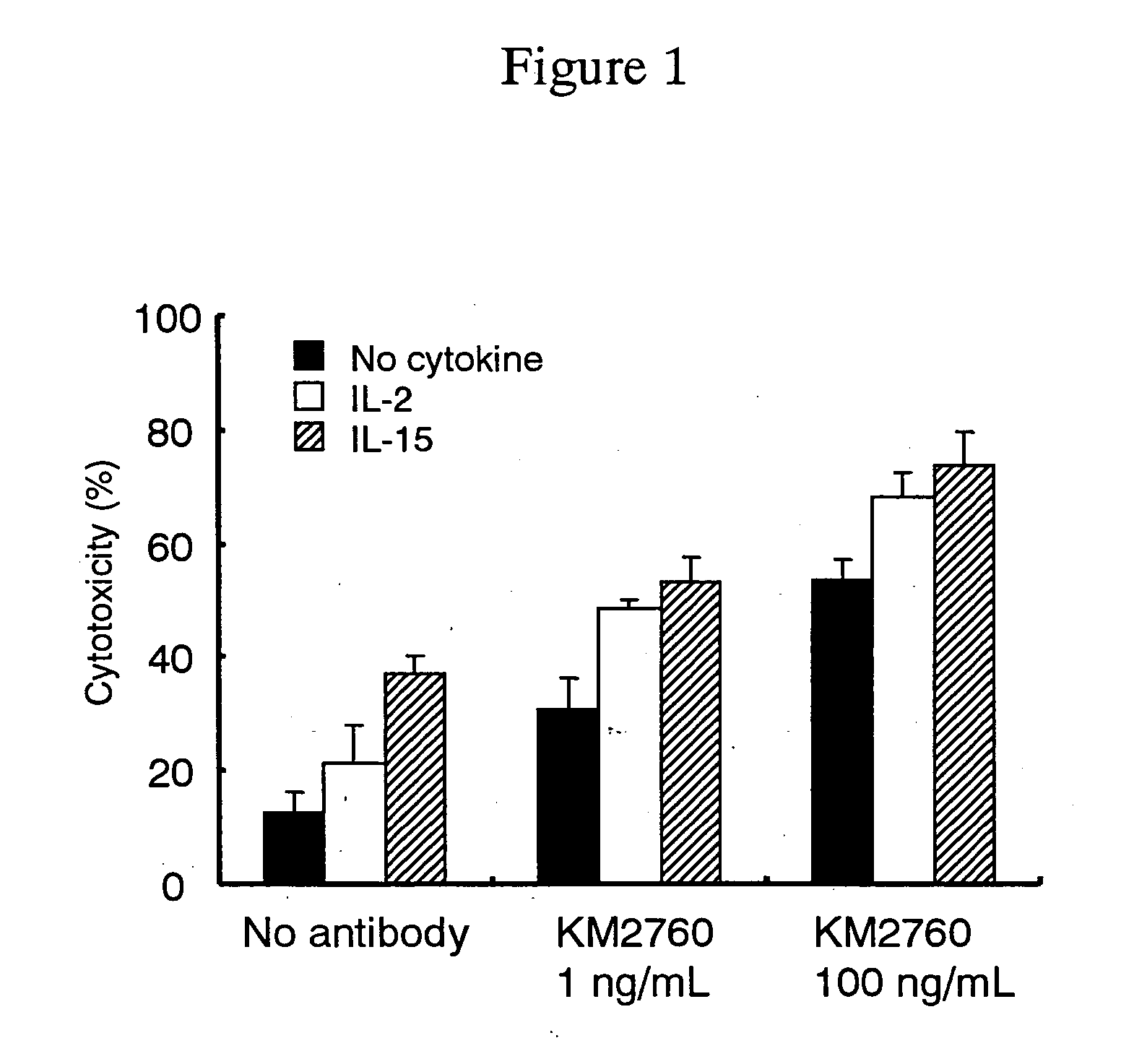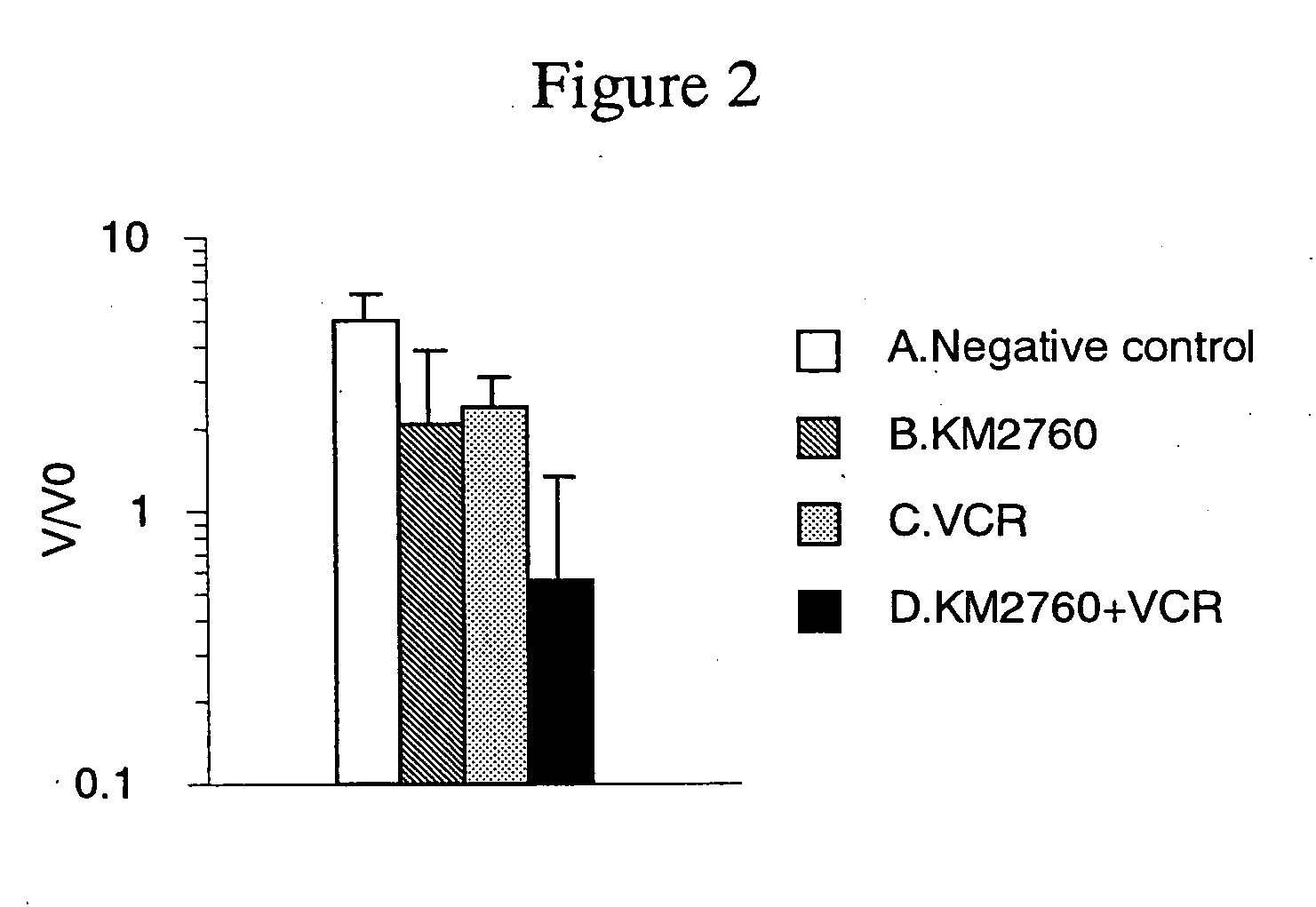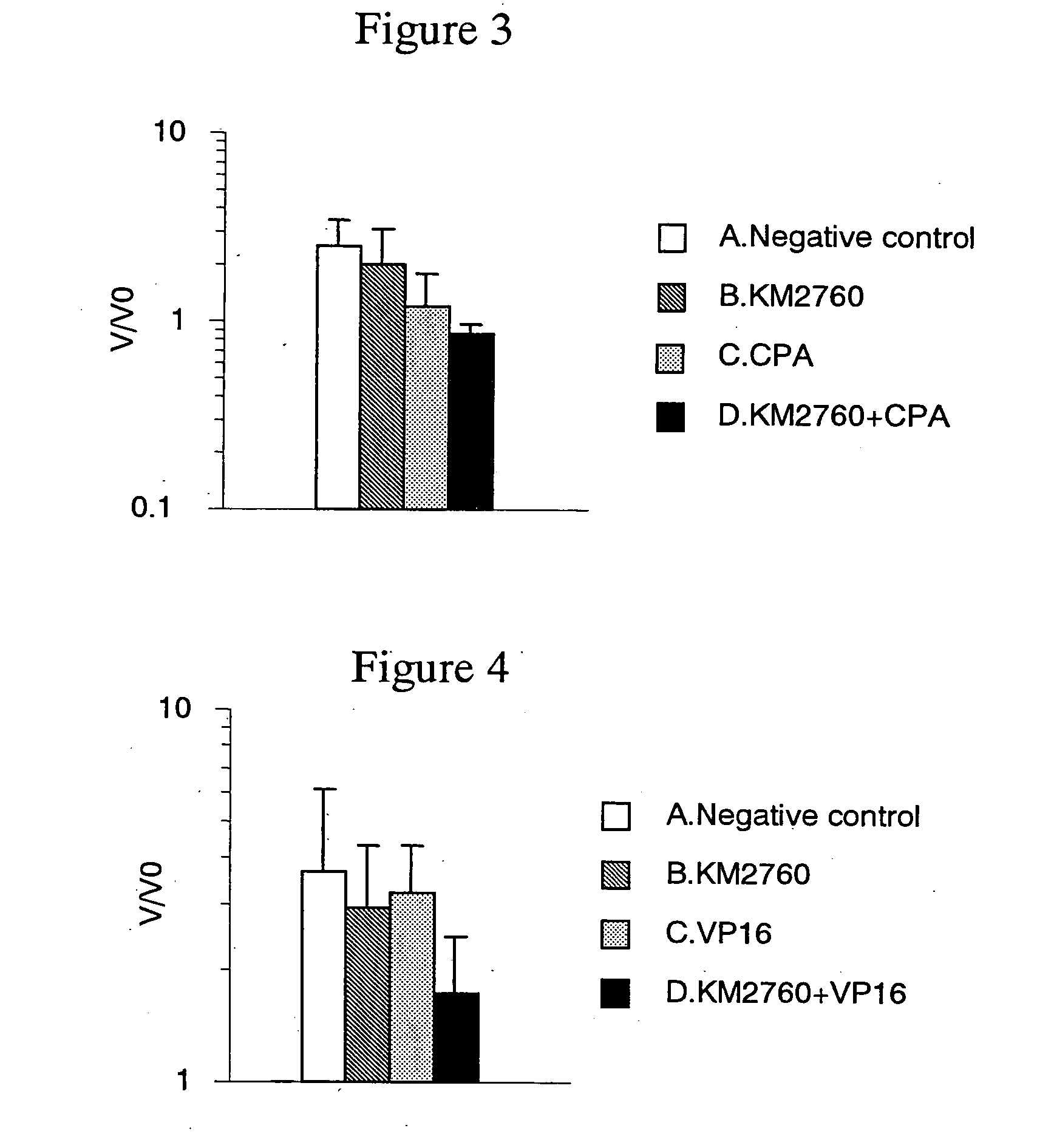Medicine containing genetically modified antibody against chemokine receptor ccr4
a technology of chemokine receptor and genetic modification, applied in the field of medicine, can solve the problems of inability to achieve satisfactory therapeutic effects of chemotherapy, poor prognosis of atl in particular, and difficulty in inducing remission
- Summary
- Abstract
- Description
- Claims
- Application Information
AI Technical Summary
Benefits of technology
Problems solved by technology
Method used
Image
Examples
example 1
[0130] Effect of an Anti-CCR4 Antibody and a Cytokine in Combination in an In Vitro Cytotoxic Activity
[0131] An effect of using anti-CCR4 human chimeric antibody KM 2760 (FERM BP-7054, WO 01 / 64754) and a cytokine in combination in an in vitro cytotoxic activity was measured by the following method.
[0132] (a) Preparation of an Effector Cell Suspension
[0133] A vein blood (50 mL) was collected from a healthy person, 0.5 mL of heparin sodium (manufactured by Shimizu Seiyaku K.K.) was added, and they were gently mixed. A mononuclear cell layer was separated from using a MONO-POLY separation solution (manufactured by Dainippon Pharmaceutical Co., Ltd.) according to the attached manual. After the layer was subjected to centrifugation and washed with RPMI 1640-FCS (5) medium [RPMI 1640 medium containing 5% FCS (Gibco. BRL)] for three times, the cells were resuspended in the same medium to a concentration of 3×106 cells / ml to give an effector cell suspension.
[0134] (b) Stimulation of Eff...
example 2
[0141] Antitumor Effect Provided by Administrating an Anti-CCR4 Antibody and Vincristine in Combination
[0142] CCRF-CEM cells (human T cell leukemia cell line) were suspended in RPMI 1640 medium (Gibco BRL) at a concentration of 2×108 cells / mL, and 100 μL of the suspension was grafted into the ventral skin of Balb / c nude mouse (Nippon Crea, male). On Day 15 after the cell grafting, a diameter of a tumor was measured with calipers, and a tumor volume was calculated using the following formula.
Tumor volume=short diameter×short diameter×long diameter×0.5 (Formula 2)
[0143] Individuals having the tumor volume within the range of 140 to 342 mm3 (on average 260 mm3) were selected, and grouped such that the average of tumor volume to be almost the same. Each of following agents A to D was administered to the mice. Incidentally, the grouping day was defined as Day 0.
[0144] A. Negative control group: No administration
[0145] B. Group of administering KM 2760 alone: 800 μg of KM2760 was ad...
example 3
[0152] Antitumor Effect Provided by Administrating an Anti-CCR4 Antibody and Cyclophosphamide in Combination
[0153] CCRF-CEM cells (human T cell leukemia cell line) were suspended in RPMI 1640 medium (Gibco BRL) at a concentration of 2×108 cells / mL, and 100 μL of the suspension was grafted intradermally in the right flank of Balb / c nude mice (Nippon Crea, male). On Day 18 after the cell grafting, a diameter of a tumor was measured with calipers, and a tumor volume was calculated using formula 2 in Example 2.
[0154] Individuals having the tumor volume within the range of 116 to 349 mm3 (on average 219 mm3) were selected, and grouped such that the average tumor volume to be almost the same. Each of the following agent A to D was administered to the mice. Incidentally, the grouping day was defined as Day 0.
[0155] A. Negative control group: No administration
[0156] B. Group of administering KM 2760 alone: 800 μg of KM2760 was administered per mouse on Day 0 and Day 4.
[0157] C. Group o...
PUM
| Property | Measurement | Unit |
|---|---|---|
| Molecular weight | aaaaa | aaaaa |
| Reactivity | aaaaa | aaaaa |
Abstract
Description
Claims
Application Information
 Login to View More
Login to View More - R&D
- Intellectual Property
- Life Sciences
- Materials
- Tech Scout
- Unparalleled Data Quality
- Higher Quality Content
- 60% Fewer Hallucinations
Browse by: Latest US Patents, China's latest patents, Technical Efficacy Thesaurus, Application Domain, Technology Topic, Popular Technical Reports.
© 2025 PatSnap. All rights reserved.Legal|Privacy policy|Modern Slavery Act Transparency Statement|Sitemap|About US| Contact US: help@patsnap.com



